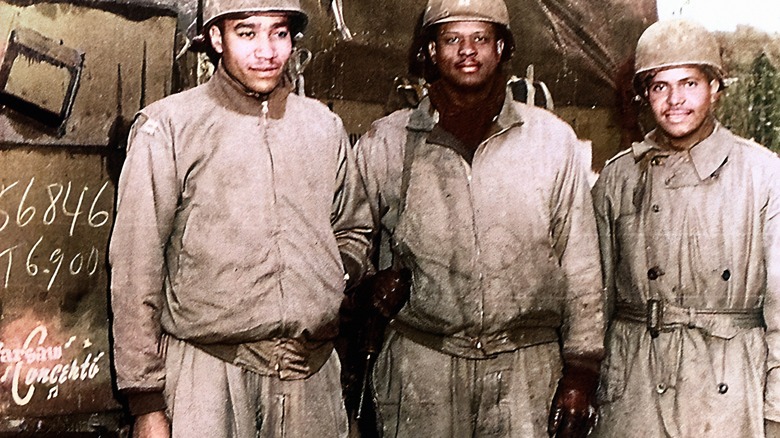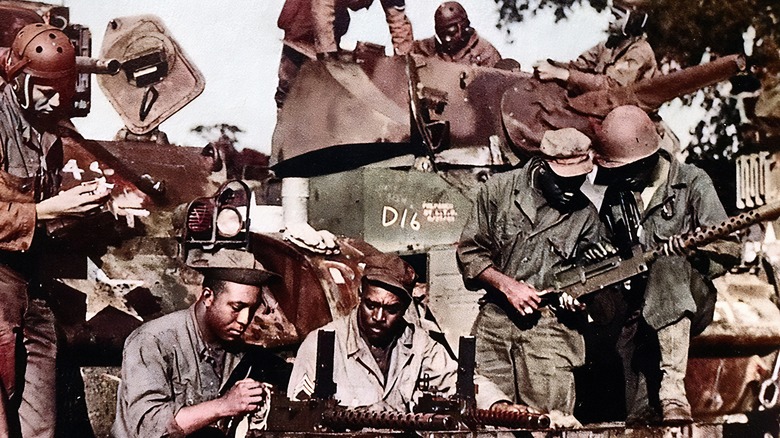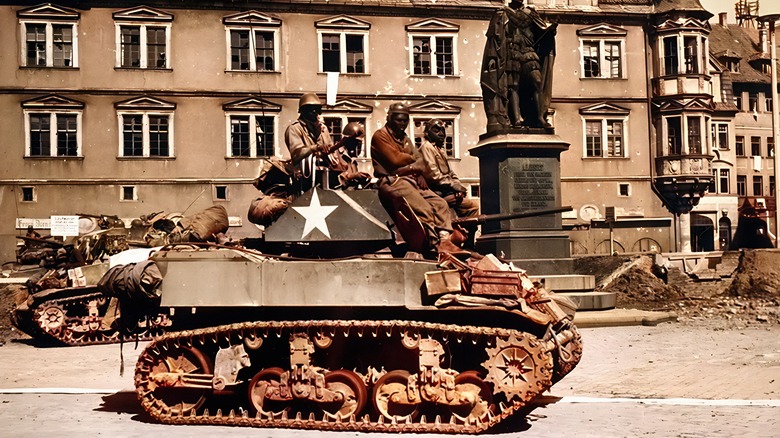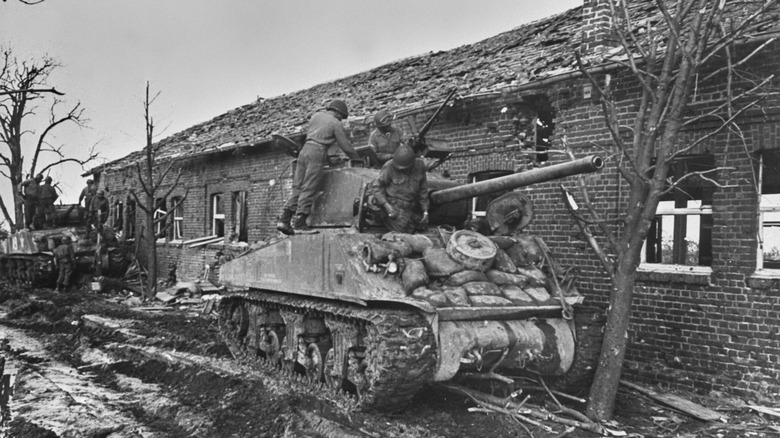Tank Battalion 761st: WWII Masters Of The Sherman And Stuart
World War II gave rise to some of the best-known and most successful war machines in history. Tanks were a prominent part of the conflict indeed, with the United States alone developing 86,000 of them as the war raged. The Axis powers wielded some mighty models, and they were a threat the Allies had to be able to meet.
The likes of the M3 Stuart did a tremendous amount of heavy lifting for the Allies, and the Stuart continues to be used in some forces today. While the longevity of such a combat stalwart is to be applauded, there's more to the equation than that. Such vehicles would be nothing, of course, without the soldiers who crewed, maintained, and generally used them.
The 761st Tank Battalion was just one vital component of a huge, versatile, war machine that eventually brought the Allies to victory, and their story is a fascinating one. Let's take a look at the creation of the battalion dubbed the Black Panthers, their role in the war, and their legacy.
When was the 761st Tank Battalion formed?
World War II was a transformative time for the United States' armed forces. In June 1942, a Life Magazine report noted that there was movement to make the military more inclusive.
Sadly, history would prove that there was a lot more work to do to continue to combat prejudice. In "Integration of the Armed Forces, 1940-65," Morris J. MacGregor writes of civil rights activists, "although segregation was their main target, their campaign was directed against all forms of discrimination, especially in the armed forces." As a result of such discriminatory policies, the 761st was formed as a Louisiana African-American battalion, in April 1942.
Texas' Camp Hood soon became the battalion's home base, where they received considerably longer training than was typical: two years of it. This meant that, by the time the 761st were deployed, they had extensive experience with the tanks they had trained with, including the M5 Stuart and the Sherman. They would go on to be invaluable assets for the Allies.
The 761st in combat
The 761st tank battalion, composed of 676 enlisted and 36 officers,30 of whom were also African American, arrived at a pivotal point in the conflict. In October 1944, having received the support of Maj. Gen. J. Lesley McNair,who wanted diverse troops to have the chance to serve their nation as they wished, they had made their way to Omaha Beach, where they would face the enemy for real for the first time.
Nov. 7 of that year saw the battalion's first battle, with the 26th Infantry at Morville-les-Vic. The German troops were forced from the town. Leading members of the battalion, such as Sgt. Warren Crecy and Staff Sgt. Ruben Rivers, so distinguished themselves in the fight that day that their actions earned them Silver Stars. Within days, the 761st had demonstrated that they were a formidable and capable fighting force.
After Morville-les-Vic, the 761st would reclaim a further 29 towns over the course of the war. They would fight for just over six consecutive months (stopping only because the war itself came to an end).
The legacy of the 761st tank battalion
Capt. John D. Long of the Black Panthers, as the battalion came to be known, laid out his promise for the 761st very plainly. He said, the National World War II Museum reports, "I swore to myself there would never be a headline saying my men and I chickened." Their courage certainly held in the battle for Morville-les-Vic, which Long noted was far more challenging than perhaps it was expected to be: "It was an inferno; my men were tigers, they fought like seasoned veterans."
By the war's end, there was no doubt that this was exactly what the battalion had become. A 1978 Presidential Unit Citation honored their "indomitable fighting spirit and devotion to duty," noting that they "reflect great credit on the 761st Tank Battalion, the United States Army, and this nation." This was high and well-earned praise indeed, and it was a great injustice that the Black Panthers had to overcome such prejudice to demonstrate themselves worthy of it.
In total, over one million African Americans served the United States in some capacity during World War II. The efforts of every one of them, and every ally who fought for their right to do so, led in a very real way to July 1948's Executive Order 9981, with which President Harry S. Truman ended segregation in the armed forces.



